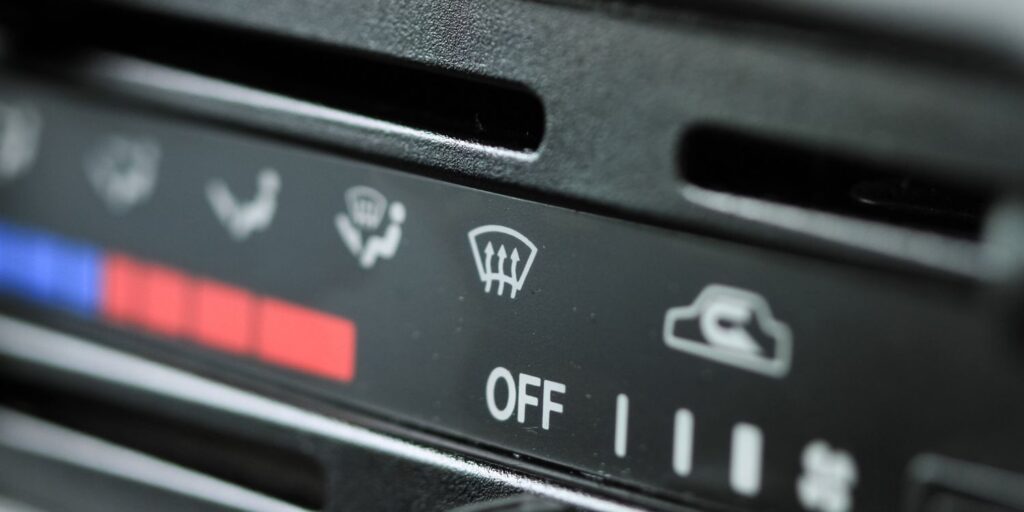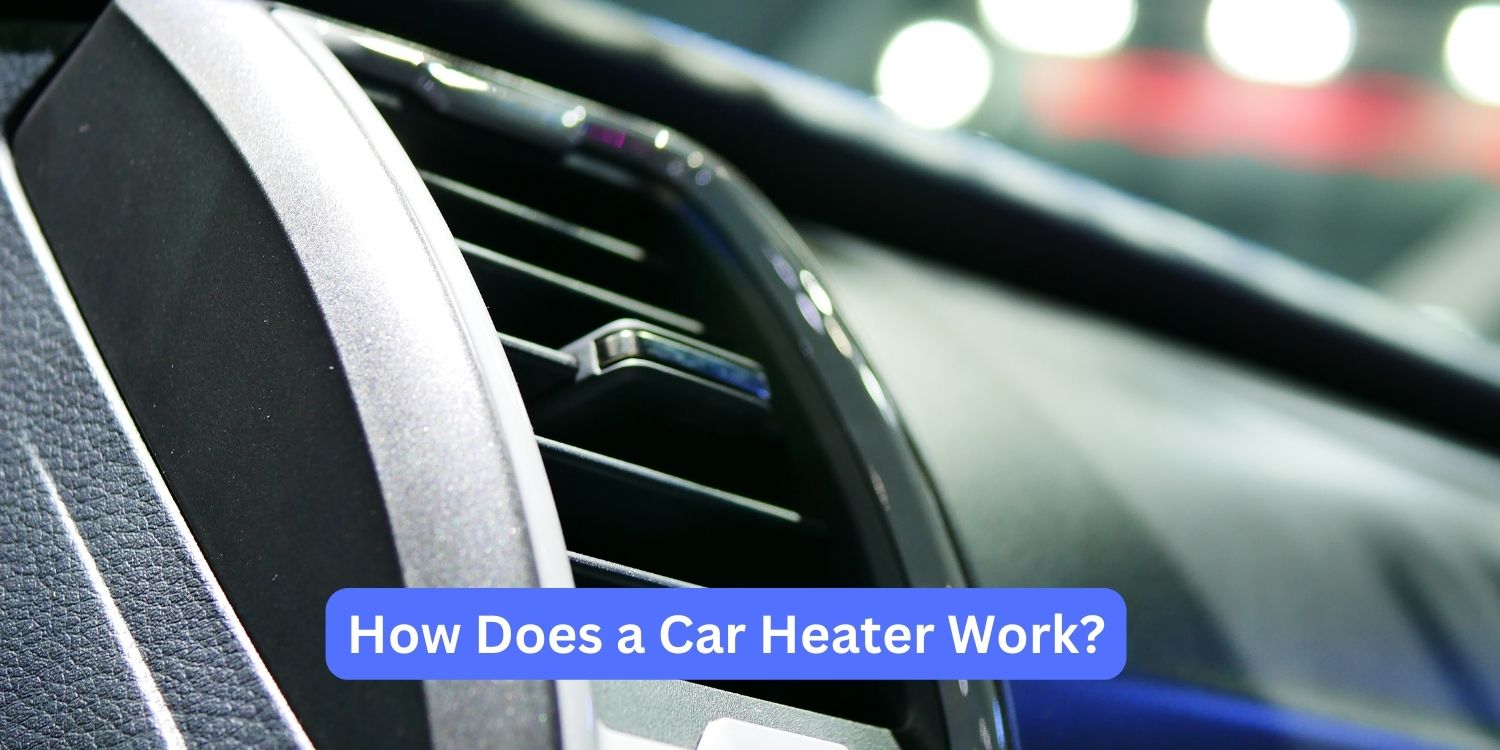A car heater becomes an essential comfort feature in chilly weather, ensuring a cozy drive despite the freezing temperatures outside. Let’s unravel their inner mechanics. Your car heater relies on the engine’s coolant.
This liquid circulates, absorbing heat from the engine block. It then flows into a tiny radiator called the heater core. A fan forces air over the hot heater core, warming it. This toasty air then vents into the cabin, enveloping you in coziness.
The amount of heat depends on the coolant temperature and fan speed. So, the next time you crank up that heater, appreciate the simple but ingenious system keeping you toasty!
Introduction to Car Heaters
Keeping you comfortable on chilly drives, car heaters play a vital role in a vehicle’s HVAC (Heating, Ventilation, and Air Conditioning) system. Their main job? Providing cozy warmth to the interior cabin.
This is especially important when temperatures drop, ensuring passengers stay toasty.
Beyond mere comfort, car heaters also play a crucial role in maintaining visibility by defrosting windows and windshields, thus enhancing overall safety while driving in winter.
Types of Car Heaters
Many types of car heaters are available, each employing different mechanisms to generate heat:
Engine Coolant Heaters
Engine coolant heaters utilize the heat produced by the car’s engine to warm up the coolant circulating through the engine block.
Simple yet effective. The coolant then shares its heat with the cabin, keeping you snug. This heated coolant is then directed to the heater core, where a fan blows air over it, transferring heat to the cabin.
Electric Heaters
Electric heaters rely on electrical energy to generate heat. These heaters typically consist of heating elements that warm up when electricity passes through them.
The warm air produced by the heating elements is then circulated into the cabin through the vehicle’s ventilation system.
Fuel-Powered Heaters
Fuel-powered heaters, also known as parking heaters or auxiliary heaters, are a different breed. They use fuel from the vehicle’s tank to generate heat, operating independently of the engine.
These heaters are great for preheating the cabin before you start your journey on those bitterly cold days.
Components of a Car Heater System
To grasp how a car heater works, you need to know its key components. Let’s break it down:
1- Heater Core
The heater core is a small radiator-like device located under the dashboard. It contains a network of tubes through which hot coolant flows from the engine.
As air passes over the surface of the heater core, it picks up heat and is then blown into the cabin by the blower fan.
2- Blower Fan
The blower fan, also known as the heater fan or HVAC fan, is responsible for circulating air through the heater core and into the cabin.
By adjusting the fan speed, passengers can control the rate at which warm air is distributed throughout the interior.
3- Thermostat
The thermostat regulates the temperature of the coolant flowing through the heater core. It ensures that the coolant reaches the optimal temperature for efficient heat transfer to the air passing over the heater core.
4- Control Panel
The control panel allows the driver or passengers to adjust various settings related to the car heater, such as fan speed, temperature, and airflow direction.
Modern vehicles may feature advanced climate control systems with automatic temperature regulation and zone-based heating.
How Does a Car Heater Work?
Now that we understand the components let’s explore the operational process of a car heater:

1- Heat Generation Process
In vehicles with engine coolant heaters, the process begins with the engine generating heat during combustion. This heat is transferred to the engine coolant, which circulates through the engine block and absorbs thermal energy.
The hot coolant then flows through the heater core, where it releases heat into the surrounding air.
For electric heaters, electricity is supplied to the heating elements, causing them to heat up. As air passes over the heated elements, it becomes warm and is pushed into the cabin by the blower fan.
Fuel-powered heaters ignite a small amount of fuel to produce heat. The heat generated is used to warm up the coolant or directly heat the air before it enters the cabin.
2- Air Circulation Mechanism
Once the air is heated, the blower fan draws it into the ventilation system and directs it towards the cabin through vents located on the dashboard, floor, or rear seats, depending on the vehicle’s design.
The fan speed can be adjusted to control the volume of air circulated and the intensity of heating.
3- Temperature Regulation
The thermostat monitors the temperature of the coolant and adjusts the flow rate to maintain the desired cabin temperature.
If the temperature setting is higher than the current cabin temperature, the thermostat allows more hot coolant to flow through the heater core, increasing heat output.
Conversely, if the cabin temperature exceeds the set point, the thermostat reduces the flow of hot coolant, preventing overheating.
Learn more about How to Keep Your Car from Overheating
Advantages of Car Heaters
Car heaters offer numerous benefits beyond keeping passengers warm:
Comfort during Cold Weather
Car heaters provide a comfortable driving experience by maintaining a cozy interior temperature, regardless of the external weather conditions.
Defrosting Capabilities
Car heaters help defrost windows and windshields, ensuring clear visibility and enhancing safety while driving in winter.
Engine Efficiency
Engine coolant heaters contribute to the efficient operation of the engine by reducing warm-up time and minimizing wear and tear on engine components.

Common Issues with Car Heaters
Despite their importance, car heaters may encounter certain issues that affect their performance:
Lack of Heat
This could be due to a malfunctioning thermostat, clogged heater core, or low coolant levels.
Strange Smells
Unpleasant odors emanating from the vents may indicate mold or bacterial growth within the HVAC system.
Malfunctioning Controls
Issues with the control panel or electrical system can result in the inability to adjust temperature or fan speed.
Maintaining Your Car Heater
To ensure optimal performance and longevity of your car heater, follow these maintenance tips:
Regular Inspections
Check for any signs of leakage, damage, or corrosion in the heater core, hoses, and connections.
Changing Coolant
Periodically flush and replace the coolant to prevent the buildup of sediment and corrosion within the cooling system.
Cleaning Filters
Clean or replace the cabin air filter to maintain proper airflow and prevent contaminants from entering the HVAC system.

Frequently Asked Questions
Frequently asked questions about car heaters are :
How can I tell if my car heater isn’t working properly?
Signs like no heat, odd smells, or control panel issues indicate potential problems with your car heater.
Can my car heater defrost windows?
Yes, car heaters help defrost windows and windshields for clearer visibility while driving in winter.
What should I do about strange smells from my car heater?
Unpleasant odors might mean mold or bacteria in your HVAC system. Get it checked and cleaned professionally.
How often should I maintain my car heater?
Regular checks for leaks or damage, plus periodic maintenance like coolant changes and filter cleaning, keep your car heater running smoothly.
What types of car heaters are there?
Engine coolant, electric, and fuel-powered heaters offer different heating methods, each with its advantages depending on your vehicle and climate.
Final Thoughts
To Summarize, car heaters are indispensable components that ensure comfort and safety during chilly weather conditions. By understanding their inner workings and operational processes, drivers and passengers can appreciate the technology behind these systems.
From engine coolant heaters to electric and fuel-powered variants, each type offers unique advantages and functions.
The key components, such as the heater core, blower fan, thermostat, and control panel, work in harmony to deliver warm air into the cabin while maintaining optimal temperature levels.
Despite their reliability, car heaters may encounter issues over time, emphasizing the importance of regular maintenance and inspection.
By following proper maintenance procedures, drivers can ensure the efficiency and longevity of their car heaters, enhancing the overall driving experience during colder seasons.
So, the next time you enjoy a cozy drive on a frosty morning, remember to thank your car heater for keeping you warm and comfortable.




